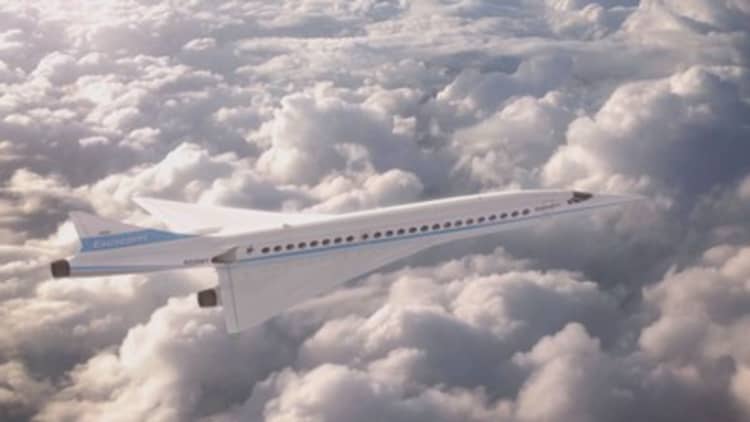The boom of supersonic air travel looks set to penetrate U.S. skies, following legislation agreed by Congress.
A bill to reauthorize the Federal Aviation Administration (FAA) was published Saturday, enjoying bi-partisan support. It will receive a confirmation vote this week.
Among the various changes included within the bill, lawmakers have agreed to pave the way for the return of supersonic flight. Supersonic air travel occurs when an aircraft travels faster than the speed of sound, also referred to as Mach One.
The last commercial supersonic flight was on 24 October, 2003, when British Airways withdrew Concorde, ending the world's only supersonic passenger service. Concorde, which had a cruising speed of 1,350 mph, or Mach Two, was retired because of a lack of profitability as well as overland restrictions on sonic booms.
A sonic boom is the noise caused by the shock wave from an aircraft traveling faster than the speed of sound. Acting like the wake of a ship, it is not heard on board but can be disruptive to people below.
Over U.S. soil it is currently illegal to break the sound barrier, but now the FAA says as part of its new legislation it wants to reverse the 1973 rules that banned civil supersonic flight.
In the draft bill, agreed by both Republicans and Democrats, the FAA is to gather fresh data on supersonic travel and develop new rules setting noise standards.
The legislation states that by the end of 2019, rules governing a new application process should be in place for companies looking to develop supersonic aircraft. It added that regulations governing flights that travel faster than the speed of sound should be in place by the end of 2020.

Various firms are gambling on the return of supersonic flight as a viable commercial operation. Denver-based Boom Supersonic is developing a 1,451 mph, 55-seat aircraft that it says could fly from Washington, D.C. to London in three-and-a-half hours.
The company has said a smaller test aircraft, known as the XB-1, recently completed wind tunnel tests and remained on track to take to the skies in 2019. Boom said it aims to have its full-size airliner ready for service by 2023.
Separately, Lockheed Martin has been working with NASA to develop a "Low-Boom Flight Demonstrator" that would issue a much softer noise than the type emitted by Concorde.
The plane, which is designed to cruse at 1,081 mph (Mach 1.4), has been in development since 2016 and is scheduled for delivery to NASA in late 2021. After that date, NASA will fly the plane over U.S. cities to test for noise.
Japanese and Russian researchers have separately said that they are also looking to develop a low-boom demonstrator.


